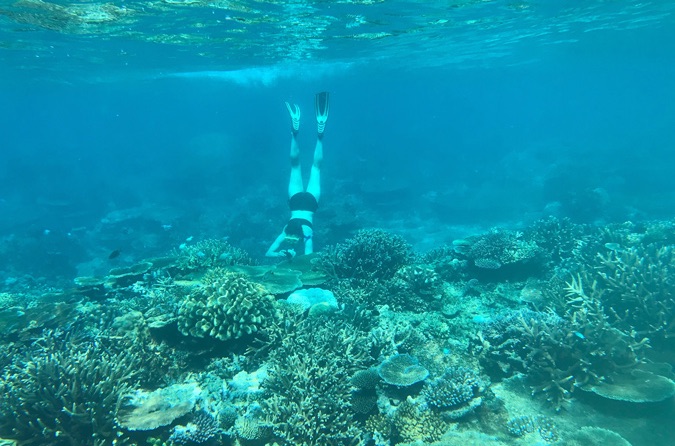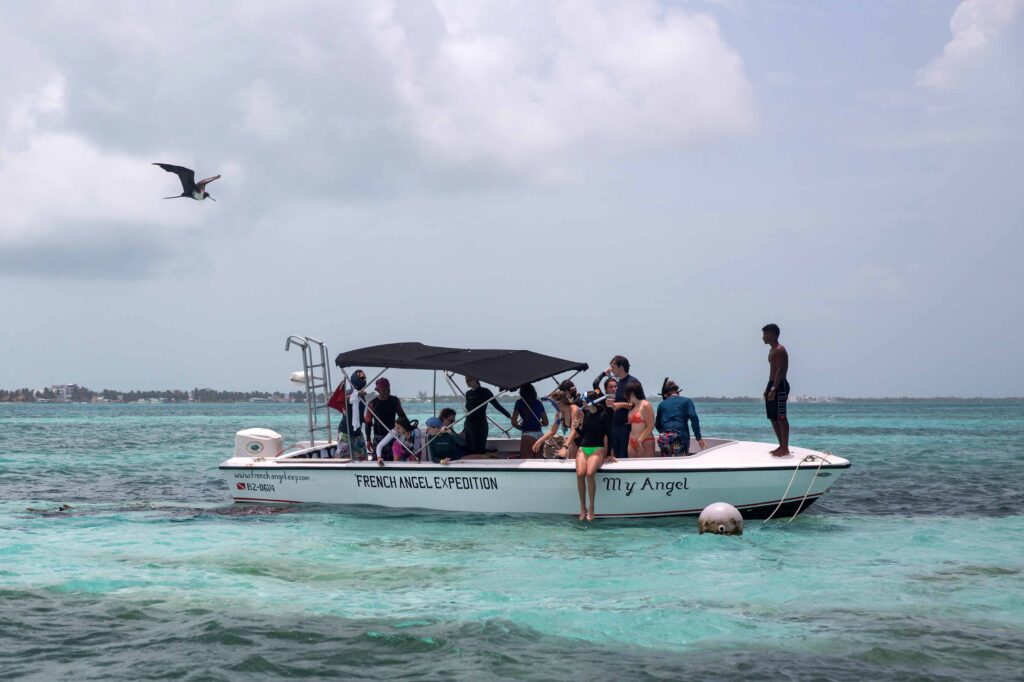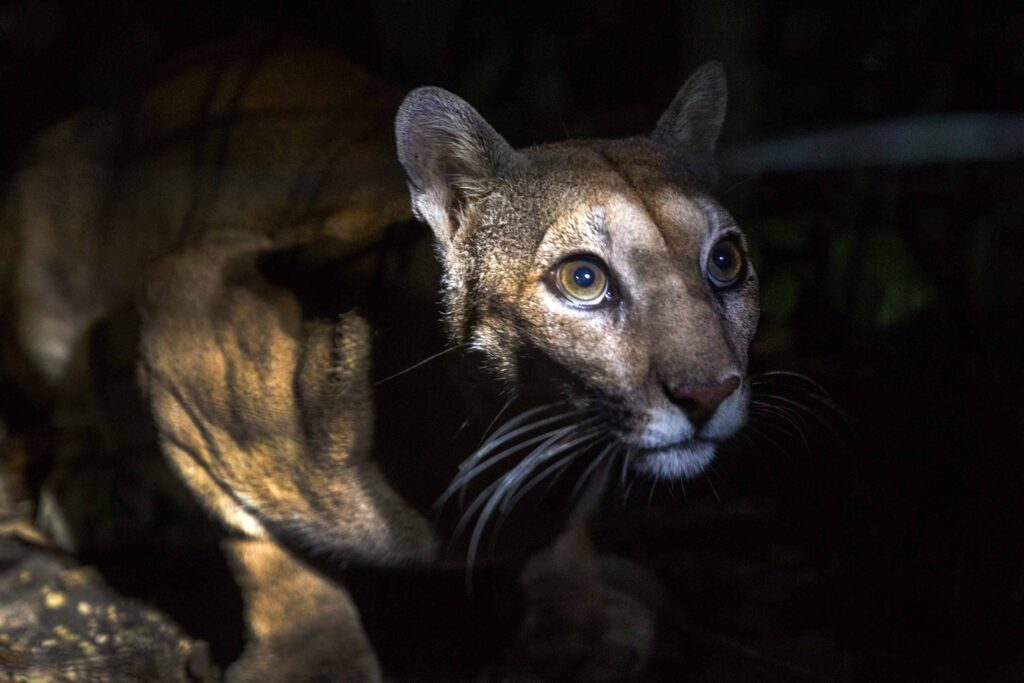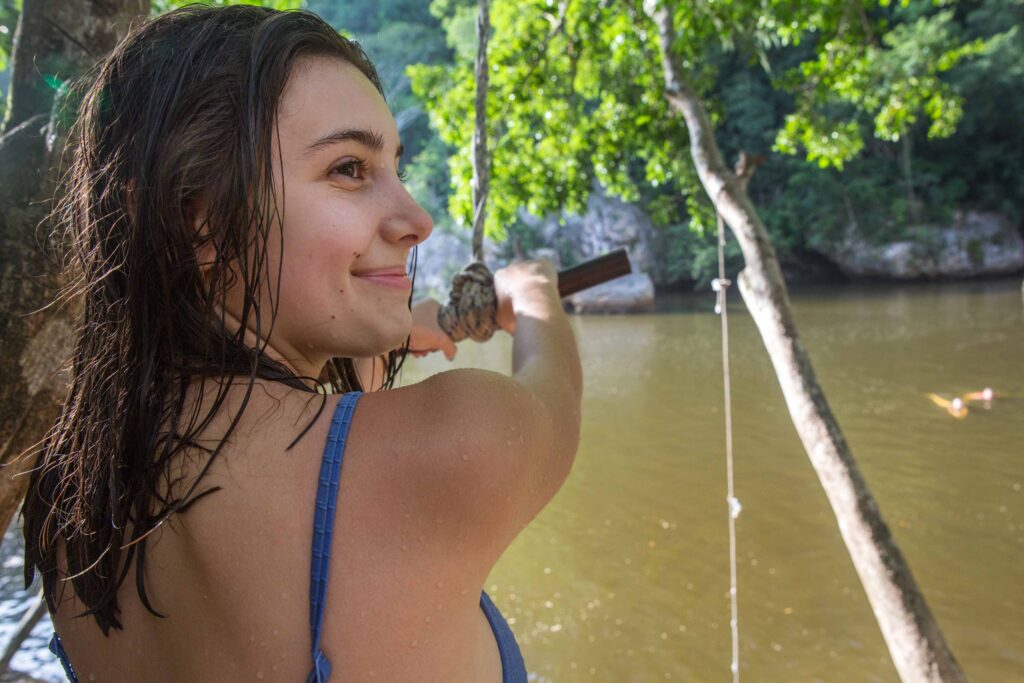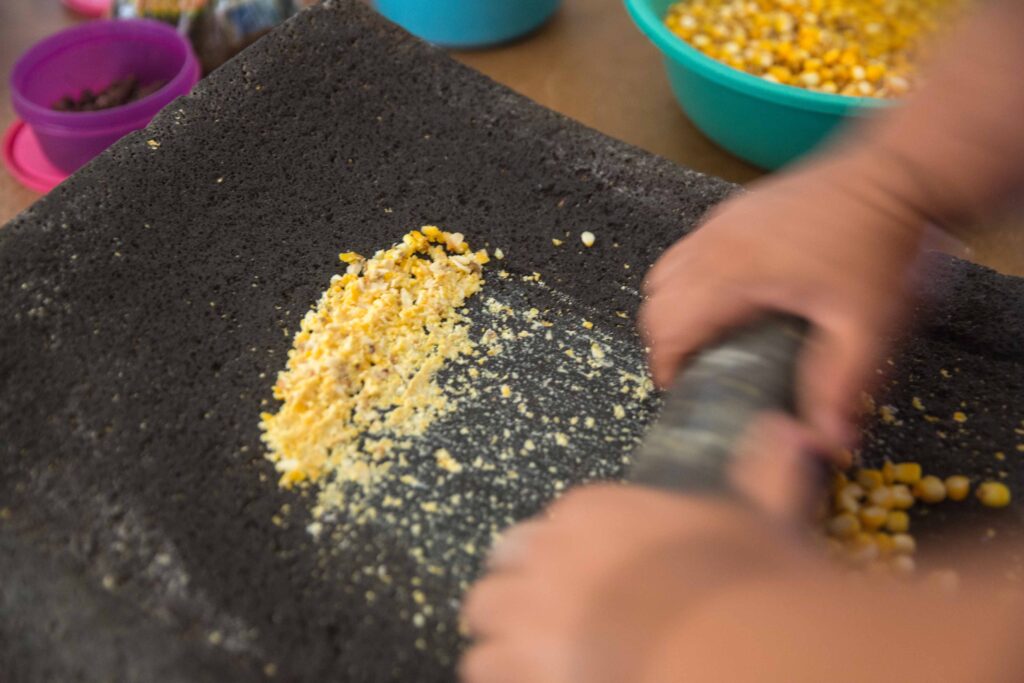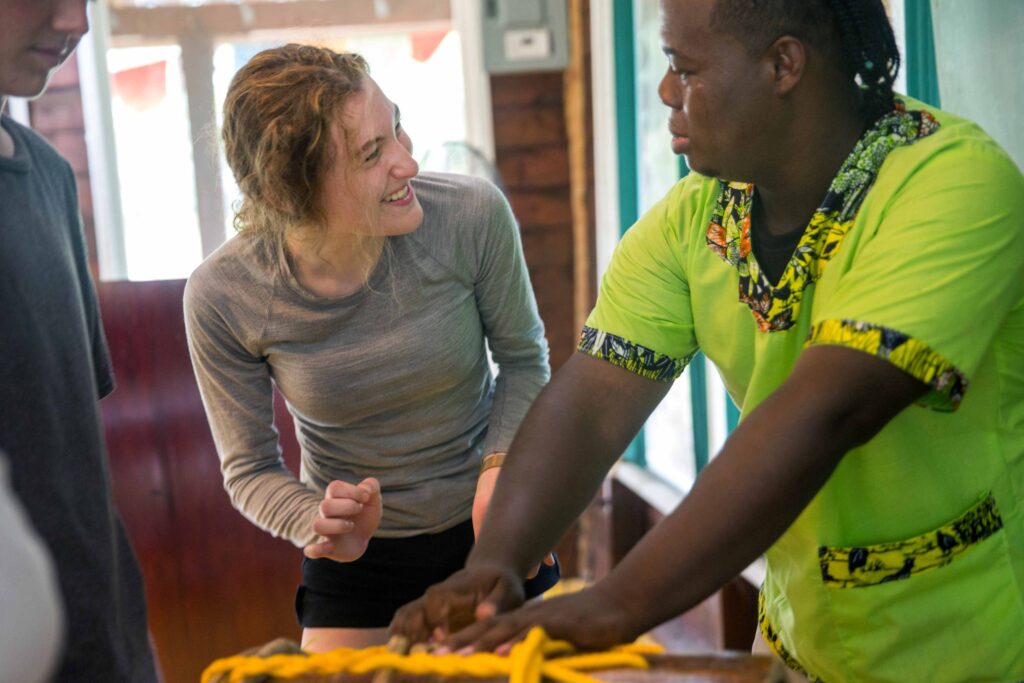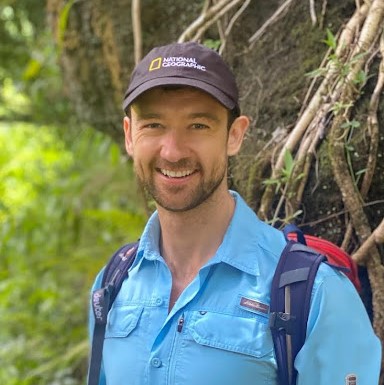Belize
Wildlife Conservation from Rainforest to Reef
Travel to Belize this summer and learn how the country’s wildlife conservation efforts have become a model for the rest of the world. Shadow professionals and explore a potential career path in zoology and marine biology. Interact with veterinarians at The Belize Zoo, talk to conservationists at animal sanctuaries, and study marine life alongside researchers as you explore Belize’s barrier reef.
- Highlights
• Visit rescue centers for green iguanas, baboons, and raptors
• Hike through dense rainforest in search of howler monkeys
• Snorkel along the barrier reef with a marine ecology expert
Expert
Itinerary
This itinerary represents our best projection of the group’s schedule. However, we may implement changes designed to improve the quality of the program.
Meet your fellow high school student travelers and one or more of your leaders in Miami, and fly together to Belize City, Belize. To learn more about how we organize travel, click here.
Get an inside look at The Belize Zoo, which was founded in 1983 as a way to provide a home for wild animals that were used to film Richard Foster’s documentary, Selva Verde. Located about 45 minutes from Belize City, the zoo is now home to over 200 native animals. It aims to bring the animals and people of Belize closer together to increase awareness of and appreciation for Belize’s wildlife and to promote the protection of the country’s natural resources. Each morning, work in small groups with the zoo staff to feed the animals, maintain their enclosures, and carry out research projects. In the afternoons, meet with zoologists, conservationists, and veterinarians. Ask questions about their professional training, their experience with various species, and their vision for wildlife conservation in Belize and beyond.
Travel to an ecolodge nestled in the dense rainforest of western Belize for further study of terrestrial species on the mainland. Enjoy swimming in the Macal River, exploring the rainforest, and visiting Maya ruins. Explore caves cut into the limestone rock and observe ceremonial artifacts left behind. Visit Xunantunich, an Ancient Maya city that is the second tallest building in the country. Climb the pyramids and explore the plazas of this famous archaeological site. Relax in the cool waters of Rio On pools, a series of clear water pools made from rocks worn smooth by centuries of water polishing. Hike out to Rio Frio Cave, a beautiful limestone tunnel carved out by a river and see where the Maya held ceremonies. Scout for the famous scarlet macaws while hiking an incredible trail network in the Maya Mountains.
Travel to Monkey Bay Wildlife Sanctuary for more encounters with tropical wildlife and inspiration from the individuals working there. The sanctuary was founded by an American Peace Corps volunteer and a cattle rancher who decided that his land was better suited for a wildlife educational center than a cattle ranch. At Monkey Bay, learn about e-birding with professional conservationists and help build nests for parrots in the field. Then, visit nearby conservation groups and learn about local individuals’ efforts to rescue, rehabilitate, and protect endangered and threatened species.
Meet your conservation expert during the transition from the jungle to the sea at Calabash Caye Field Station. Wake up in front of the ocean at Belize’s first nationally owned and managed marine research facility. Spend three days exploring the atolls and the major cayes, lagoons, and fringe reef. During the day, snorkel along the reef and learn about invasive species while observing sea turtles, rays, and scores of colorful fish. At night, look for octopus, squid, and other bioluminescent creatures. Enjoy guest lectures on sustainability from the Turneffe Atoll for Sustainability Association.
Take a water taxi from the mainland to Caye Caulker, a tiny island located along the barrier reef. At five miles long, Caye Caulker has three roads, and the only vehicles here are bicycles and golf carts! Strap on your snorkel and compare sea grass, mangrove, and coral reef habitats alongside certified guides. Snorkel among groupers, rays, and nurse sharks at Shark Ray Alley, part of the Hol Chan Marine Reserve on the southern tip of Ambergris Caye. Hol Chan was declared a marine reserve—the first in Belize—over 30 years ago, and has helped pave the road for marine protection throughout coastal Belize and the rest of the world. Learn about the development of marine-protected areas, examine the role of ecotourism and local conservation efforts in reef preservation. Enjoy the last couple of days of your program while you kayak through the mangroves in search of tiny seahorses, bike around the sandy streets, and play a game of soccer on the local field. Celebrate with your group at a final dinner, reflect on what you learned about Belize’s biodiversity, share your independent project, and celebrate your adventures with new friends.
Fly from Belize City to Miami with your group and a leader, then continue on to your final destination. To learn more about how we organize travel, click here.
Itinerary
This itinerary represents our best projection of the group’s schedule. However, we may implement changes designed to improve the quality of the program.
Meet your fellow high school student travelers and one or more of your leaders in Miami, and fly together to Belize City, Belize. To learn more about how we organize travel, click here.
Get an inside look at The Belize Zoo, which was founded in 1983 as a way to provide a home for wild animals that were used to film Richard Foster’s documentary, Selva Verde. Located about 45 minutes from Belize City, the zoo is now home to over 200 native animals. It aims to bring the animals and people of Belize closer together to increase awareness of and appreciation for Belize’s wildlife and to promote the protection of the country’s natural resources. Each morning, work in small groups with the zoo staff to feed the animals, maintain their enclosures, and carry out research projects. In the afternoons, meet with zoologists, conservationists, and veterinarians. Ask questions about their professional training, their experience with various species, and their vision for wildlife conservation in Belize and beyond.
Travel to an ecolodge nestled in the dense rainforest of western Belize for further study of terrestrial species on the mainland. Enjoy swimming in the Macal River, exploring the rainforest, and visiting Maya ruins. Explore caves cut into the limestone rock and observe ceremonial artifacts left behind. Visit Xunantunich, an Ancient Maya city that is the second tallest building in the country. Climb the pyramids and explore the plazas of this famous archaeological site. Relax in the cool waters of Rio On pools, a series of clear water pools made from rocks worn smooth by centuries of water polishing. Hike out to Rio Frio Cave, a beautiful limestone tunnel carved out by a river and see where the Maya held ceremonies. Scout for the famous scarlet macaws while hiking an incredible trail network in the Maya Mountains.
Travel to Monkey Bay Wildlife Sanctuary for more encounters with tropical wildlife and inspiration from the individuals working there. The sanctuary was founded by an American Peace Corps volunteer and a cattle rancher who decided that his land was better suited for a wildlife educational center than a cattle ranch. At Monkey Bay, learn about e-birding with professional conservationists and help build nests for parrots in the field. Then, visit nearby conservation groups and learn about local individuals’ efforts to rescue, rehabilitate, and protect endangered and threatened species.
Meet your conservation expert during the transition from the jungle to the sea at Calabash Caye Field Station. Wake up in front of the ocean at Belize’s first nationally owned and managed marine research facility. Spend three days exploring the atolls and the major cayes, lagoons, and fringe reef. During the day, snorkel along the reef and learn about invasive species while observing sea turtles, rays, and scores of colorful fish. At night, look for octopus, squid, and other bioluminescent creatures. Enjoy guest lectures on sustainability from the Turneffe Atoll for Sustainability Association.
Take a water taxi from the mainland to Caye Caulker, a tiny island located along the barrier reef. At five miles long, Caye Caulker has three roads, and the only vehicles here are bicycles and golf carts! Strap on your snorkel and compare sea grass, mangrove, and coral reef habitats alongside certified guides. Snorkel among groupers, rays, and nurse sharks at Shark Ray Alley, part of the Hol Chan Marine Reserve on the southern tip of Ambergris Caye. Hol Chan was declared a marine reserve—the first in Belize—over 30 years ago, and has helped pave the road for marine protection throughout coastal Belize and the rest of the world. Learn about the development of marine-protected areas, examine the role of ecotourism and local conservation efforts in reef preservation. Enjoy the last couple of days of your program while you kayak through the mangroves in search of tiny seahorses, bike around the sandy streets, and play a game of soccer on the local field. Celebrate with your group at a final dinner, reflect on what you learned about Belize’s biodiversity, share your independent project, and celebrate your adventures with new friends.
Fly from Belize City to Miami with your group and a leader, then continue on to your final destination. To learn more about how we organize travel, click here.
Belize is a small country with great natural beauty. It has the lowest population of any Central American country, and it boasts incredible biodiversity. Belize is home to the largest barrier reef in the Western Hemisphere, subtropical jungles, and rainforests. Belize has taken a leadership role in wildlife and natural resource protection and preservation, from the foundation of wildlife sanctuaries to the banning of offshore drilling and single-use plastics. Belize also boasts countless Mayan ruins, and visitors to these archaeological sites, buried deep within the jungle, learn about the intersection of nature and Belize’s ancient Maya civilizations.
Belize was a British colony from 1862 to 1981, and English is the country’s official language. Other languages spoken include Kriol (Belizean Creole), Garifuna, Spanish, and Mayan languages.
Belize is a tropical country with two seasons: wet and dry. We visit during the wet season. It rains often in brief, heavy showers, typically in the late afternoon. Daytime temperatures range from 85–95°F, while nighttime temperatures drop between 75–80°F.
Belizean cuisine is hearty fare with rice, beans, and a delicious array of tropical fruits, such as papaya, mango, and pineapple, at almost every meal. A typical lunch consists of rice and beans, fish or chicken, vegetables, cheese, tortillas, and fruit.
Belize is a small country with great natural beauty. It has the lowest population of any Central American country, and it boasts incredible biodiversity. Belize is home to the largest barrier reef in the Western Hemisphere, subtropical jungles, and rainforests. Belize has taken a leadership role in wildlife and natural resource protection and preservation, from the foundation of wildlife sanctuaries to the banning of offshore drilling and single-use plastics. Belize also boasts countless Mayan ruins, and visitors to these archaeological sites, buried deep within the jungle, learn about the intersection of nature and Belize’s ancient Maya civilizations.
Belize was a British colony from 1862 to 1981, and English is the country’s official language. Other languages spoken include Kriol (Belizean Creole), Garifuna, Spanish, and Mayan languages.
Belize is a tropical country with two seasons: wet and dry. We visit during the wet season. It rains often in brief, heavy showers, typically in the late afternoon. Daytime temperatures range from 85–95°F, while nighttime temperatures drop between 75–80°F.
Belizean cuisine is hearty fare with rice, beans, and a delicious array of tropical fruits, such as papaya, mango, and pineapple, at almost every meal. A typical lunch consists of rice and beans, fish or chicken, vegetables, cheese, tortillas, and fruit.
What to Expect
Review specific program expectations here. For more general information:
Wildlife Conservation • During your time in Belize, you can expect to interact with veterinarians, zookeepers, marine biologists, naturalists, and conservationists as you explore Belize’s jungle and barrier reef. This program provides students with opportunities to work alongside individuals who have dedicated their lives to the protection and preservation of Belize’s terrestrial and marine species. Hands-on experiences, such as volunteering at The Belize Zoo and reef cleaning on Tobacco Caye, enable students to learn more about potential career paths in zoology, veterinary science, and marine biology.
Pursue an independent project and explore an aspect of zoology, veterinary science, or marine biology of particular interest to you—become an expert on the endangered jaguar, interview a local veterinarian about animal rescue and rehabilitation, or create an album documenting all of the tropical species you encountered in Belize.
To encourage full engagement and immersion in the Putney travel experience, we limit the use of cell phones and other devices on our High School programs. Students are allowed to use their phones in transit to the program, and keep their devices throughout. During in-country orientation, leaders will lock phones with a code, unlocking them for the second half of the program. During the tech-free portion of the program, students have the opportunity for a weekly call home according to a pre-arranged schedule. For more details, please see our FAQ.
This is a physically active summer travel program. You can expect to walk, snorkel, hike, and canoe. You do not need to be at peak fitness to participate, but it is important that you have a desire to be physically active, and that you are excited about trying all activities.
At the Tropical Education Center and The Belize Zoo, we stay in shared dormitory-style rooms. At Monkey Bay, we stay in mountain-view cabins. Along the Macal River, we stay in shared cabañas at another ecolodge. Calabash Caye hosts us in two large cabins. On Caye Caulker, we stay in waterfront rooms at a small, family-run hotel.
Our accommodations provide all meals throughout the program. We enjoy typical Belizean fare together in the dining halls of our accommodations.
What to Expect
Review specific program expectations here. For more general information:
Wildlife Conservation • During your time in Belize, you can expect to interact with veterinarians, zookeepers, marine biologists, naturalists, and conservationists as you explore Belize’s jungle and barrier reef. This program provides students with opportunities to work alongside individuals who have dedicated their lives to the protection and preservation of Belize’s terrestrial and marine species. Hands-on experiences, such as volunteering at The Belize Zoo and reef cleaning on Tobacco Caye, enable students to learn more about potential career paths in zoology, veterinary science, and marine biology.
Pursue an independent project and explore an aspect of zoology, veterinary science, or marine biology of particular interest to you—become an expert on the endangered jaguar, interview a local veterinarian about animal rescue and rehabilitation, or create an album documenting all of the tropical species you encountered in Belize.
To encourage full engagement and immersion in the Putney travel experience, we limit the use of cell phones and other devices on our High School programs. Students are allowed to use their phones in transit to the program, and keep their devices throughout. During in-country orientation, leaders will lock phones with a code, unlocking them for the second half of the program. During the tech-free portion of the program, students have the opportunity for a weekly call home according to a pre-arranged schedule. For more details, please see our FAQ.
This is a physically active summer travel program. You can expect to walk, snorkel, hike, and canoe. You do not need to be at peak fitness to participate, but it is important that you have a desire to be physically active, and that you are excited about trying all activities.
At the Tropical Education Center and The Belize Zoo, we stay in shared dormitory-style rooms. At Monkey Bay, we stay in mountain-view cabins. Along the Macal River, we stay in shared cabañas at another ecolodge. Calabash Caye hosts us in two large cabins. On Caye Caulker, we stay in waterfront rooms at a small, family-run hotel.
Our accommodations provide all meals throughout the program. We enjoy typical Belizean fare together in the dining halls of our accommodations.
A Day in the Life: The Belize Zoo
- Morning
- Afternoon
- Evening
A Day in the Life:
The Belize Zoo
- Morning
- Afternoon
- Evening
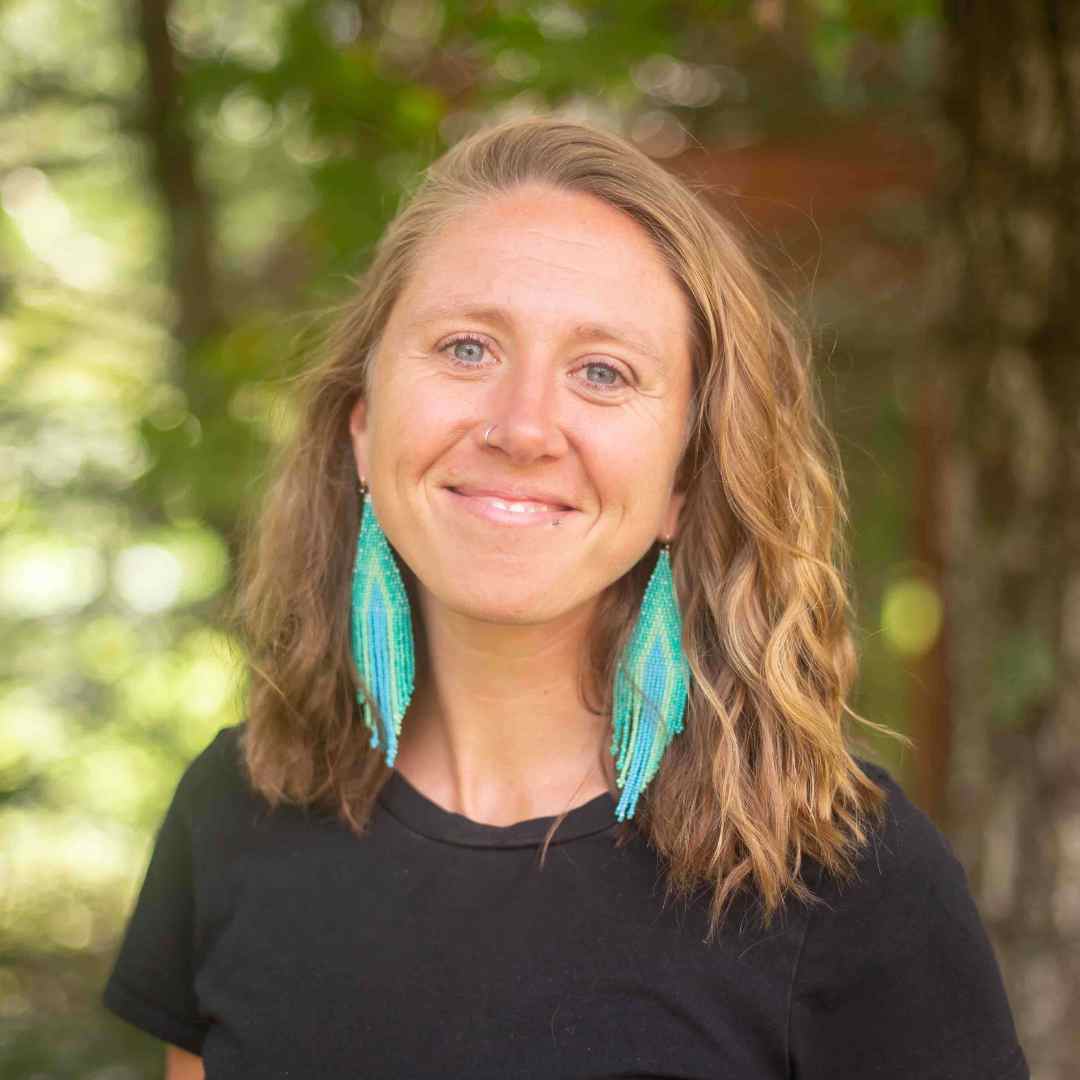
Program Directed by
If you have questions or would like to talk further about this program, please get in touch!




